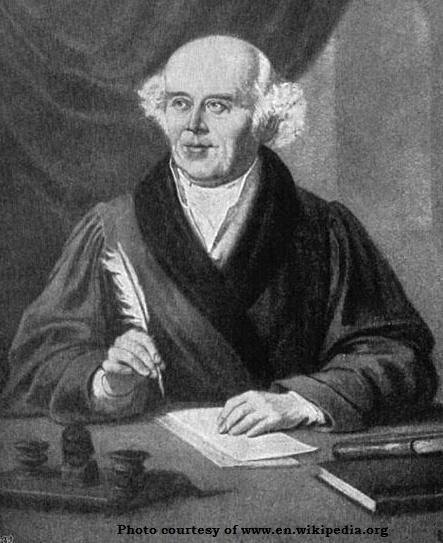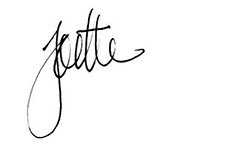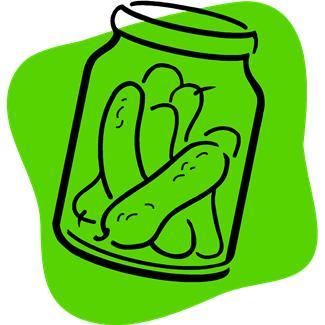|
The Case for Homeopathy

Dear Friends,
Skeptics abound, and it’s sad to say that those antagonistic to homeopathy are not always polite (or well informed!). The best defense is to arm yourself with knowledge of the new research that supports homeopathy. We’re doing our best to provide this information on our website. If you find other interesting research on the Internet, we’d love to hear about it!
Love,

Why Homeopathy Is Ahead of Its Time
Despite its 200-year record of successful cures, homeopathy often comes under attack because of the supposed lack of “scientific evidence” to support the claim that highly diluted homeopathic remedies can still affect the human body. In fact, numerous studies, both medical studies and studies from other disciplines, support the effectiveness of homeopathy.
For example, in 1986, Dr. David Taylor Reilly conducted a double-blind study entitled “Is Homeopathy a Placebo Response?” (Originally published in The Lancet, November, 1986). Dr. Reilly’s study concluded that the evidence did not support the idea that placebo action explains the clinical response to the homeopathic drug.
Eight years later, in 1994, Dr. Reilly conducted another double-blind study entitled “Is Evidence for Homeopathy Reproducible?” (The Lancet, December, 1994). Here, he successfully reproduced the results from studies done by two of his colleagues at the University of Glasgow on homeopathic immunotherapy in inhalant allergies. The study showed that homeopathically treated patients had a 33% reduction in symptoms and physical signs of breathing distress, while placebo patients had a 10% reduction in signs and symptoms (P=0.0004).
Similarly, in 2004, the journal Rheumatology reported a double-blind, randomized, parallel-group, placebo-controlled trial of homeopathy entitled “Improved clinical status in fibromyalgia patients treated with individualized homeopathic remedies versus placebo.” The study found that “individualized homeopathy is significantly better than placebo in lessening tender point pain and improving the quality of life and global health of persons with fibromyalgia.”
We have recently collected a number of these studies and have them available for your review on our website under “Resources.” I urge you to familiarize yourself with these results, so you will be prepared to answer the skeptics in your life.
Despite this evidence, skeptics continue to argue that homeopathic remedies cannot possibly affect the body because there is no visible sign that the active ingredient still exists in the diluted remedy. But today’s science is beginning to provide answers for that argument as well.
A study by Rao, Roy, Bell and Hoover, entitled “The defining role of structure (including epitaxy) in the plausibility of homeopathy,” published in Homeopathy, Volume 96, Issue 4, October 2007, states in its abstract:
“The key stumbling block to serious consideration of homeopathy is the presumed ‘implausibility’ of biological activity for homeopathic medicines in which the source material is diluted past Avogadro's number of molecules. Such an argument relies heavily on the assumptions of elementary chemistry (and biochemistry), in which the material composition of a solution (dilution factors and ligand–receptor interactions) is the essential consideration.
“In contrast, materials science focuses on the three-dimensional complex network structure of the condensed phase of water itself, rather than the original solute molecules. The nanoheterogenous structure of water can be determined by interactive phenomena such as epitaxy (the transmission of structural information from the surface of one material to another without the transfer of any matter), temperature–pressure processes during succussion, and formation of colloidal nanobubbles containing gaseous inclusions of oxygen, nitrogen, carbon dioxide, and possibly the remedy source material.
“Preliminary data obtained using Raman and Ultra-Violet–Visible (UV–VIS) spectroscopy illustrate the ability to distinguish two different homeopathic medicines (Nux vomica and Natrum muriaticum) from one another and to differentiate, within a given medicine, the 6c, 12c, and 30c potencies. Materials science concepts and experimental tools offer a new approach to contemporary science, for making significant advances in the basic science studies of homeopathic medicines.”
Now, that’s a lot of heavy-duty science, but what it means in effect is that by using the correct tools, researchers can differentiate between different homeopathic remedies and different potencies.
In other words, the better we become at measuring the world at a molecular level or smaller, the better we will be able to explain why homeopathic remedies work.
Another study published in 2004 by the peer-reviewed journal Inflammation Research showed that water in which histamine had been diluted and succussed is significantly different from water in which no substance has been diluted and succussed. Not only is the water significantly different, but this water also brought about significant effects in the body.
This concept of “water memory” remains controversial, but this study and others are the first attempts to understand a world that is foreign to many of us.
When I was young, the first computer ever built barely fit into a very large room. Today, far greater memory capacity than that of that first machine can be housed on a single wafer smaller than your fingertip.
I learned that atoms consisted of neutrons, protons and electrons. Today, the field of quantum mechanics has introduced the concepts of sub-particles such as quarks and leptons.
The study of nanotechnology is teaching us how to manipulate matter on a molecular and even atomic scale. Kevin Bonsor and Jonathan Strickland in an article entitled “How Nanotechnology Works” published on howstuffworks.com say, “There's an unprecedented multidisciplinary convergence of scientists dedicated to the study of a world so small, we can't see it -- even with a light microscope. That world is the field of nanotechnology, the realm of atoms and nanostructures. Nanotechnology is so new no one is really sure what will come of it.”
I have trouble wrapping my mind around the concept that the cells of my body are made up of tiny particles we cannot see; in fact, everything we touch is made of atoms spinning and interacting in a dance all their own.
As we explore more deeply into what makes up the world, we find smaller and smaller particles that have a huge effect on how our bodies work, how materials work…how the universe works. Is it really such a huge leap of the imagination to say that homeopathic remedies maintain some small particles that can affect the body?
I cannot see the electrons that make electricity, but I know that when I flip a light switch, the light will come on. Likewise, I may not be able to determine the differences between Nux vomica and Natrum muriaticum pills without ultraviolet spectroscopy, but when I take a properly chosen remedy, I know that it will work.
I feel confident that as science continues its journey into the world of the tiny but powerful, the proof for homeopathy will be even more fully revealed. It has been there all the time…homeopathy was just ahead of its time in taking us there.
Meanwhile, I don’t need a study to tell me that homeopathy works…my dog no longer is covered in cysts within days of being given Thuja 30. Nor does our cat need to understand Avogadro’s number when she stopped suffering from chronic abscesses on her legs after Silica 30.
I could recall many, many accounts over the past 26 years, but I like to share the animal ones best because they are not prone to placebo reactions.
Indeed, whatever the reason for its efficacy, simply put, homeopathy works!
The information provided in this article is for educational purposes only
and may not be construed as medical advice. The reader is encouraged to make
independent inquires and to seek the advice of a licensed healthcare
provider.

Interested
in finding out if homeopathy is a fit for you and your family's health
strategy?
Call 716-941-1045 or EMAIL us
to set up a brief introductory appointment with Joette.
|







 Sunscreen or Vitamin D?
Sunscreen or Vitamin D?
 It’s Pickle Time!
It’s Pickle Time! 

 In order to better manage our efforts to share the message about better health through homeopathy and nutrient-dense foods through our newsletter and blogs and still be able to bring you more new products and classes, we have decided to publish our newsletter only once per month, beginning in July.
In order to better manage our efforts to share the message about better health through homeopathy and nutrient-dense foods through our newsletter and blogs and still be able to bring you more new products and classes, we have decided to publish our newsletter only once per month, beginning in July. Don’t Get Spitting Mad!
Don’t Get Spitting Mad! 




